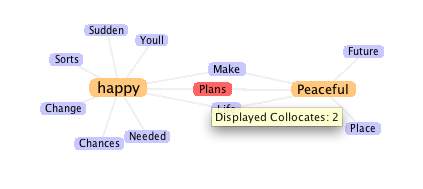The Ithaka organization has released a report on the Sustainability and Revenue Models for Online Academic Resources with support from the Strategic Content Alliance and JISC in the U.K. The report deals with the difficult question of how to sustain all the free online resources we have built in the first enthusiasm of the web.
There is no single formula that Online Academic Resources (OARs) can apply to achieve sustainability, no ‘one-size-fits-all’ plan that any organization can follow to reach a point of financial stability. There are, however, a variety of processes and approaches that can help to improve the likelihood of entrepreneurial success. In an age when traditional content producers – including scholarly publishers and newspapers – struggle to maintain their financial footing in face of the challenges of the digital world, OARs cannot turn to lessons of the past to find their way, but must see themselves as nimble players in a quickly shifting field.
Part of the problem is that we think of the digital as if it were a grant project with a print outcome. You do the research, you develop the resources, you publish it and then you move on. Digital publication seems to be cheaper and faster than print, but the true cost is the sustainability. You can get it up faster, but then you have to maintain it forever. The report argues that the problem is that academics, as smart as they are, don’t know how to think like entrepreneurs.
Clearly the leaders of these initiatives are competent professionals; why do they not rely on processes that have proven effective in both commercial and not-for-profit contexts? We have concluded that a key reason for this is that academic researchers tend to approach these problems from a different perspective, and with a different mindset, than do commercial entrepreneurs. (Page 5)
For this reason the report presents an entrepreneurial start-up model which excludes academics who can’t focus soley on a project (which is most of us):
Running a start-up is a full-time job and requires full-time leadership. The mode of principal investigators, in which they divide their time between overseeing a variety of research grants, teaching courses, and other responsibilities, is not conducive to entrepreneurial success. New initiatives aiming for sustainability require fully dedicated, fully invested, and intensely focused leadership. If a principal investigator cannot provide it, he or she will have to retain a very capable person who can. (Page 7)
This is the second time in a week or so I have heard people calling for the professionalization of academic resource development (the other time being at the Tools for Data-Driven Research meeting where the view was voiced that tool development should be taken out of the hands of the academics.) Reading the report I wonder what the role of academics in scholarly resources is, if any? It reminds me of calls for MBAs to run universities rather than academics. I wonder what it would look like to apply the logic of this report to the university itself (as a type of institution.) I think it fair to say that the university has clearly proven to be longer lasting (more sustainable) than commercial enterprises. For that matter ask how many software companies still exist ten years later (see my blog entry on In Search of Stupidity, over 20 years of high-tech marketing disasters). To be fair I think the report is looking at models for large-scale academic resources like online journals and other non-profit resource organizations that are often run by professional staff already. Hereis a list of their major points:
- Â Most OAR projects should not assume ongoing support from initial funders.
- Sustainability plans must include and provide for resources to support future growth.
- OAR projects create value through the impact they have on users.
- Projects should think in terms of building scale through partnerships, collaborations, mergers, and even acquisitions.
- In a competitive world, strategic planning is imperative.
- OAR leaders must see both the needs of users and the competitive environment as dynamic and constantly changing.
- OAR leaders must become fully accountable both to their projects and to their funders.
- Catalysing a dynamic environment for agility, creativity, risk-taking, and innovation is imperative.
While I am skeptical of the entrepreneurial thinking the report starts with we can learn from these points about sustainability by looking at the issue from an entrepreneurial perspective still stands. We can and should think about the long term sustainability and we can learn from other perspectives.
The really useful part of the report is “Section 4: Revenue Generating Options for OARÂ Projects” which systematically discusses direct and indirect ways of generating revenue including the much avoided approach of allowing ads into academic sites.
 NiCHE (
NiCHE (
